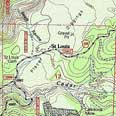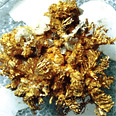All Articles
Legislative and Regulatory Update
June 2003 by Staff
• Comment period reopened for pygmy owl critical habitat in ArizonaThe comment period has been opened again for the pygmy owl following a court ruling that forced the US Fish & Wildlife Service (FWS) to disclose the actual locations where the birds have been found.
While the Federal Register announcement states that they are reopening the comment period because the locations of the birds are now available to the public, we were unable to locate a location report or the new economic analysis on the Fish & Wildlife Service website. However, there is a phone number for further information: Steve Spangle, Field Supervisor, (602)242-0210.
The FWS pegged critical habitat at over 700,000 acres in 1999. The Southern Arizona Home Builders Association filed suit and the habitat designation was tossed out by Judge Susan Bolton because the Service failed to perform a complete economic analysis. The Service followed up with another economic analysis and then doubled the size of the critical habitat proposal to 1.2 million acres, which amounts to over 66,000 acres for each of the 18 owls. The owl is abundant in Mexico, but not in Pima County, Arizona, the northern end of its range.
Comments on the latest critical habitat proposal can be sent via email to: cfpo_habitat@fws.gov
Comments can also be faxed to: (602)242-2513 or sent by mail to Field Supervisor, Arizona Ecological Services Office, 2321 West Royal Palm Road, Suite 103, Phoenix, AZ 85021.
Comments on both the proposed critical habitat designation and the draft economic analysis will be accepted until June 27, 2003.
• Limits on wilderness study areas finalized in Utah
US District Court Judge Lee Benson accepted the agreement made between Interior Secretary Gale Norton and Utah Governor Michael Leavitt that limits wilderness study areas.
Norton effectively nullified former Interior Secretary Bruce Babbitt’s wilderness handbook, which instructed Bureau of Land Management (BLM) staffers to continue considering new areas for wilderness beyond the congressionally mandated deadline of 1991.
Only Congress has the authority to designate wilderness. They asked for a study of potential wilderness areas in 1976 and provided a fifteen year deadline to complete the project.
Norton capped potential wilderness designations at 9.6 million acres nationwide, refusing to consider additional wilderness areas that were proposed after 1991.
• IBLA rules miner cannot set up or store processing equipment on claim when no mining is taking place
In a ruling from the Interior Board of Land Appeals (IBLA), Judge Hughes ruled that BLM can require a mining claimant to remove equipment from a claim where the claimant intends to process minerals in the future but no actual mining is taking place. Judge Hughes ruled, “It is no defense that appellant hopes or expects to receive mineral material for processing at the site in the future… The long period of inactivity justified BLM’s actions here.”
No actual mining occurred on the claim for six years, though the claim is still valid. (John B. Nelson, Robert Kahre, 158 IBLA 370, April 15, 2003.)
Free copies of IBLA decisions are available (up to 50 pages). Contact the IBLA, 801 North Quincy St, Ste 300, Arlington, VA 22203 or call (703) 235-3799.
• New law to protect claims and equipment in Washington State
A new “Mineral Trespass” law, designed to protect the rights and property of miners in the State of Washington, has made it through the state legislature and is awaiting the governor’s signature. Governor Gary Locke is expected to sign the bill into law.
The law would make it a felony to interfere with, disturb, or tamper with a mining claimant’s equipment, claim markers or posted notices. It would also make it a felony to disturb, remove, or attempt to remove any mineral from the claim site.
A violation would be punishable by one year in the county jail and a $1,000 fine.
Greg and Candy Christensen, Graham Willmore, and Bruce and Betty Beatty deserve praise for educating legislators and getting the bill pushed through.

The St. Louis Gold District
 In 1848 and 1849, miners had pushed all through the western Sierra foothills making many fantastic gold discoveries. The far north end of California’s Mother Lode country, however, had received little exploration.
In 1848 and 1849, miners had pushed all through the western Sierra foothills making many fantastic gold discoveries. The far north end of California’s Mother Lode country, however, had received little exploration.
Wall-Rock Alteration
Wall-rock (country rock) alteration is found in all hard-rock mining districts and has been caused by hydrothermal solutions in the past history of the region. The zones of alteration have a bearing on where one might drill for ore bodies. The weekend prospector does not have the tools nor knowledge to block out ore deposits, but he can narrow down his search dramatically by understanding the zones of wall-rock alteration that he sees.
Melman on Gold & Silver
“What A Difference A Day Makes.” That song title accurately describes the huge change in momentum that occurred March 11, 2008, when the central banks of the world announced their rescue plan for the beleaguered international credit system, which appeared to be crumbling right in front of their very eyes.
Fair and Balanced? If You Have the Cash
Have you ever wondered how misinformation about gold mining makes its way into the mainstream publications and news sources? Recently I stumbled across a “news” story that was pure rhetoric.
California Miners Locate Rich Pocket of Specimen Gold
 Over fifty pieces of dendritic gold, ranging from 1 gram up to 2.5 ounces, were recently discovered at a mine in the Allegheny Mining District in Northern California.
Over fifty pieces of dendritic gold, ranging from 1 gram up to 2.5 ounces, were recently discovered at a mine in the Allegheny Mining District in Northern California.
Legislative and Regulatory Update
• Utah, fed up with federal and environmental policies, takes action
• Administration proposes ending fish protections to settle suit
• Court finds fault with Forest Service spotted owl study
The Final Gold Strike of the Alaska Gold Rush—Livengood Stampede, 1914
The Livengood (pronounced with a long “i” as in alive) gold stampede was the last of the great Alaska Gold Rush. The string of gold rushes began in 1886 with the Fortymile gold strike, and ten years later with the large Yukon Klondike goldfields discovery.
Subscription Required:
The Bawl Mill
• City Gives Blessing to Pogo Mine
• Underground at Yankee Jim's
• Dry Placers in Southern Baja
• A Gold Detector Sitting in a Closet Only Finds Dust—More Detector Tips
• Gold in Tennessee
• Old Stock Certificates—Treasures or Trash?
• Payette Forest Sides With Mining Company
• Using Mineral Deposit Models
• Miners Still Waiting for Bonding Recommendations from DOI
• The Old Mine Dump
• A Practical Approach to Dowsing
• Feds Release Opinion on Planned Mine Under Montana Wilderness
• The Lengendary Lost Gold of the Headless Valley
• Looking Back
• Melman on Gold & Silver
• Mining Stock Quotes and Mineral & Metal Prices
Free:








